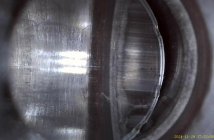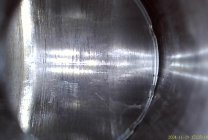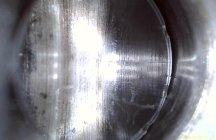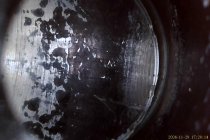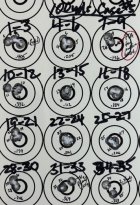After cleaning my 30BR rifle chamber and bore (confirmed clean by borescope), then shooting a 35 round batch, what appears to be carbon presented on the chamber wall about .228" behind the chamber shoulder-body junction; see the 3 pics which start at the chamber mouth, then move back across the neck then to the body where the deposits are shown.
The pics show that the chamber neck is fairly clean and the usual carbon ring is present at the mouth (which I clean before shooting). I have not seen such deposits on the chamber body before and wonder if the new reamer used with tighter diameter tolerances (up to +.0002 instead of up to +.0005) including the chamber body diameter, may, upon discharge, be preventing gas flow going back between the chamber body and the case body. The gap between the case necks and chamber neck on each side is about .0015" (which is what I routinely use per Tony); the case necks show carbon sine waves (which I want per Tony) for the first 28 cases shot, then start showing wavy lines then unclear amorphous carbon deposits through shot 35 suggesting these carbon deposits on the chamber body may be accumulating and inhibiting gas flow going backward. Bullet velocity increased minimally but variably after shot #28 when I think the deposits had accumulated, and group size suffered.
Thoughts about what might be causing these deposits?
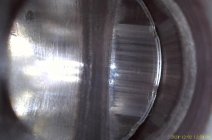
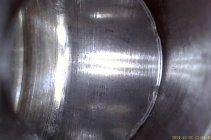
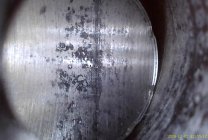
The pics show that the chamber neck is fairly clean and the usual carbon ring is present at the mouth (which I clean before shooting). I have not seen such deposits on the chamber body before and wonder if the new reamer used with tighter diameter tolerances (up to +.0002 instead of up to +.0005) including the chamber body diameter, may, upon discharge, be preventing gas flow going back between the chamber body and the case body. The gap between the case necks and chamber neck on each side is about .0015" (which is what I routinely use per Tony); the case necks show carbon sine waves (which I want per Tony) for the first 28 cases shot, then start showing wavy lines then unclear amorphous carbon deposits through shot 35 suggesting these carbon deposits on the chamber body may be accumulating and inhibiting gas flow going backward. Bullet velocity increased minimally but variably after shot #28 when I think the deposits had accumulated, and group size suffered.
Thoughts about what might be causing these deposits?













